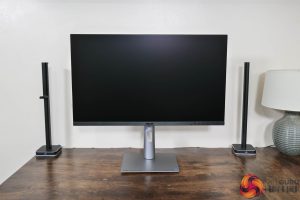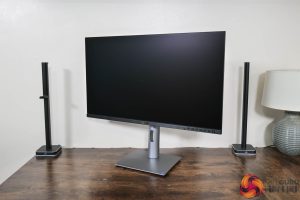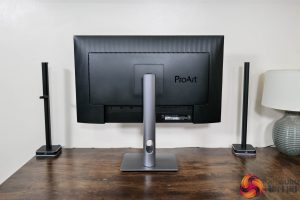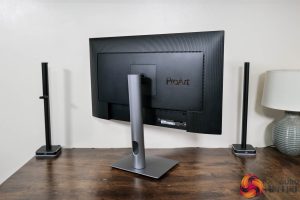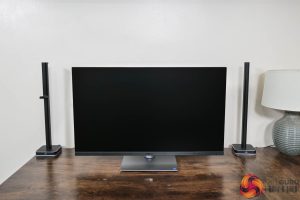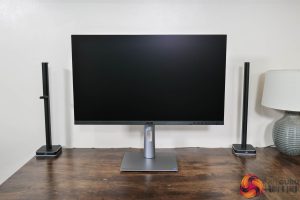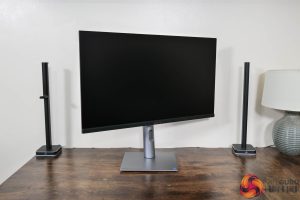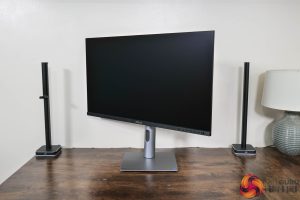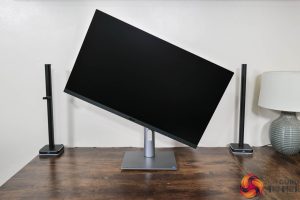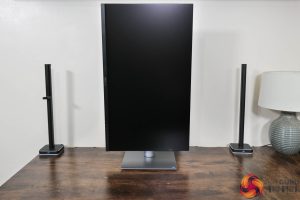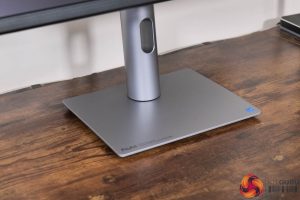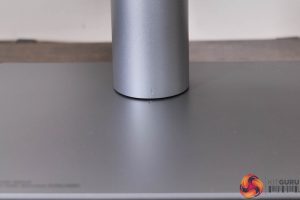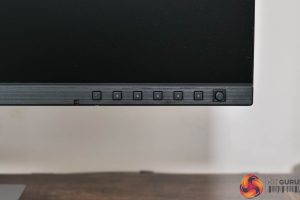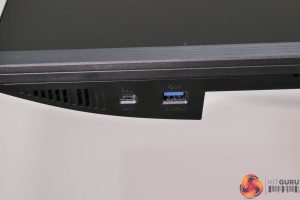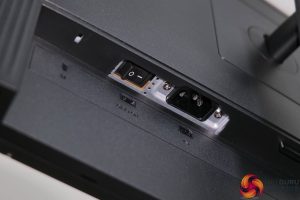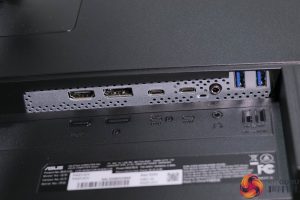Kicking things off with a look at the design of the monitor, it's a very clean overall aesthetic. The front features a 3-side frameless design, along with a bottom chin which measures approximately 16mm thick. The chin, while made of plastic, has a brushed-effect finish which adds to the modern styling.
Round the back, the rear is mostly matte black plastic, but with some textured design elements which add visual interest. The ProArt logo is also positioned to the right of the stand. ASUS has also opted for a compact rectangular foot, and this measures approximately 22.7cm across and 18.9cm deep, so it doesn't take up much room at all.
Speaking of the stand, this offers a full array of ergonomic adjustments. This includes up to 130mm of height adjustment, 30 degrees of swivel both left and right, tilt from -5 to +23 degrees, and 90 degree pivot. VESA 100×100 mounts are also supported if you have an existing desk mount or monitor arm.
That may come in handy as while I do like the look of the PA27JCV, I do find the build quality to be a bit lacklustre considering the price. It just feels very plasticky to me – the silver stand and foot may look like metal from a distance, but it becomes apparent as soon as you assemble the thing that it is plastic, and not a particularly high-quality feeling material either.
I appreciate that most of the R&D for a monitor like this goes into the panel itself, but I really think a metal stand should be included at this price point. It's $800 after all, and I've tested plenty of gaming screens that are half the cost – if not more! – yet still come with metal stands, so that definitely a disappointment.
I do, however, like that there is a built-in alignment feature on the stand and foot, so you can see if the base and stand are perfectly lined up!
Back to the front of the screen, here we find a total of six buttons used to power on the monitor and control the OSD. There is also a small front-facing joystick to the right of those buttons, something I was very relieved to see as this makes navigating the OSD so much easier.
On the underside of the chin, on the left hand side of the screen, we also find both a USB-C and a Type-A port positioned for easy access.
The bulk of the I/O is at the back of the monitor though. The left-hand side features the power input, power switch and a Kensington lock. Over on the right-hand side, ASUS includes 1x HDMI 2.1 and 1x DisplayPort 1.4 inputs (both of which can handle 5K/60Hz), alongside two USB-C ports. The left-hand one supports DP Alt mode and 96W power delivery, while the other only supports data upstream. Then there's an audio jack, and two USB 3.1 Gen1 Type-A downstreams.
 KitGuru KitGuru.net – Tech News | Hardware News | Hardware Reviews | IOS | Mobile | Gaming | Graphics Cards
KitGuru KitGuru.net – Tech News | Hardware News | Hardware Reviews | IOS | Mobile | Gaming | Graphics Cards


